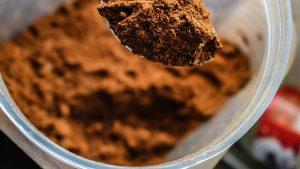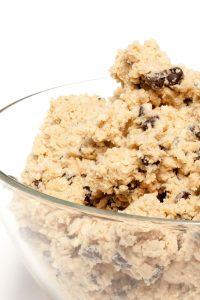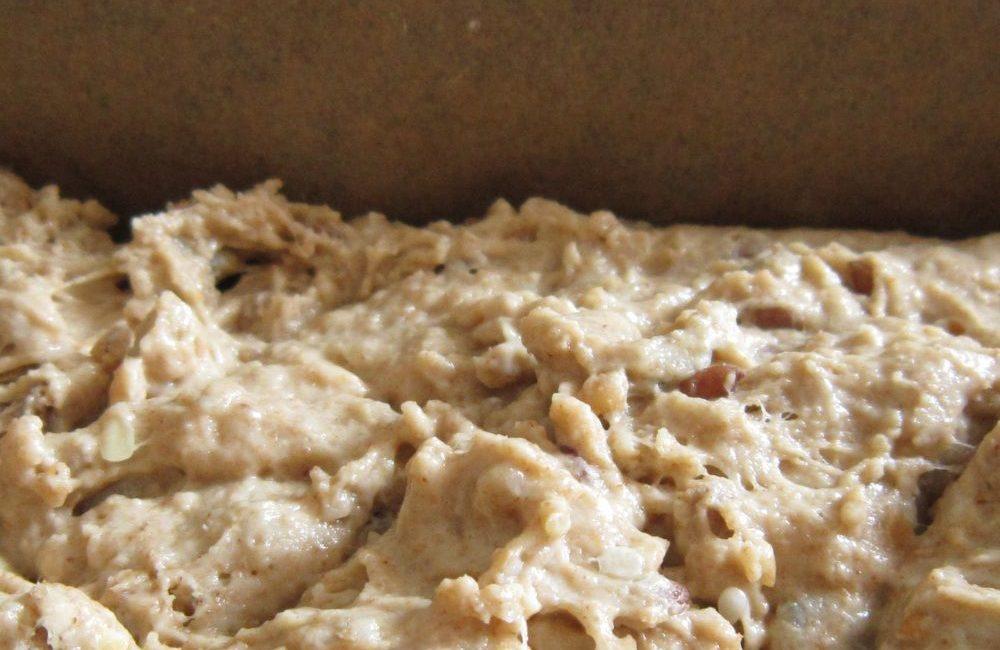Oops! We’ve all been there, that moment when you realize you’ve gone a little overboard with the sugar in your chocolate cookie dough.
But don’t worry, it’s a common mishap in the world of baking, and the good news is, there are some simple and creative ways to rescue your sweet treats.
In this blog post, we’ll dive into the rescue mission and explore how to fix overly sweet chocolate cookie dough.
So, if your taste buds are craving balance and your cookies need a sugar intervention, read on for some delicious solutions!
When Sugar Takes Over: How to Correct Your Chocolate Cookie Dough.
Accidentally adding too much sugar to your chocolate cookie dough can be a bit tricky to fix, but it’s not impossible.
Here are some steps you can take to balance out the sweetness:
Adjust the Dry Ingredients: To counteract the excess sweetness from the sugar, you’ll want to increase the other dry ingredients. Start by adding more flour to the dough.
This will help dilute the sweetness. You may need to add a couple of tablespoons at a time until you achieve the desired consistency.
Add More Dough: If you’ve increased the flour and the dough is still too sweet, you can make more cookie dough without sugar and gradually incorporate it into the overly sweet dough until you reach the desired balance.
Lemon Juice or Vinegar: A small amount of lemon juice or white vinegar can help cut through the sweetness.
Start with just a teaspoon and mix it into the dough. Taste and adjust as needed.
Be cautious not to add too much, as you don’t want to introduce a sour flavor.
Unsweetened Cocoa Powder: If your chocolate cookie dough is also flavored with cocoa powder, you can add more unsweetened cocoa powder to help balance the sweetness.
Salt: A pinch of salt can help balance out the sweetness as well. It won’t completely remove the excess sugar, but it can help mask it to some extent.
Chill the Dough: Sometimes, chilling the dough for an hour or so in the refrigerator can mellow out the sweetness.
This won’t remove the sugar, but it can help the flavors meld together better.
Make More Cookies: If the dough is still too sweet after trying the above steps, you can make a larger batch of cookies without sugar and combine the two batches to dilute the sweetness.
Remember to taste the dough as you make adjustments to ensure you’re moving in the right direction.
Keep in mind that it might not be possible to completely eliminate the excess sugar, but with some trial and error, you can hopefully salvage your chocolate cookie dough and end up with a tasty batch of cookies.

Further Explanations.
Let me dive deeper and elaborate further on all the points mentioned, firstly, let’s delve deeper into the methods for fixing overly sweet cookie dough here:
1. Adjust the Dry Ingredients (Increase Flour):
Why it works: Adding more flour to the cookie dough helps dilute the sweetness because flour is a neutral ingredient that doesn’t contribute sweetness.
How to do it: Start by adding small amounts of flour, typically a couple of tablespoons at a time, to your overly sweet cookie dough. Mix the dough thoroughly after each addition.
Keep adding flour until the dough reaches a consistency that’s closer to your desired cookie dough texture.
Considerations: Be cautious not to add too much flour too quickly, as it can make the dough too dry and affect the cookie’s texture. Aim for a balance between reducing sweetness and maintaining the dough’s texture.
2. Add More Dough (Without Sugar):
Why it works: Introducing additional cookie dough without sugar helps dilute the overall sugar content of the mixture.
How to do it:
Prepare a separate batch of cookie dough without any sugar.
Gradually incorporate the unsweetened dough into your overly sweet dough. Start by adding small portions of the unsweetened dough and mixing it thoroughly with the sweet dough.
Continue this process until you achieve a balance where the sweetness is more palatable.
Considerations: This method can be effective when the sweetness is excessive, and you want to create a larger batch of cookies.
Ensure that the unsweetened dough you add is of a similar consistency and flavor profile as the sweet dough to maintain the cookie’s overall quality.
Both methods aim to balance the sweetness without compromising the cookie dough’s texture or taste.
Remember to taste the dough as you make adjustments and proceed gradually to achieve the desired balance.
3. Lemon Juice or Vinegar:
Why it works: Lemon juice or white vinegar adds acidity, which can help balance out the excessive sweetness by creating a more complex flavor profile. The acid helps cut through the sugar’s sweetness.
How to do it:
Start with just a teaspoon of lemon juice or white vinegar.
Mix it into the cookie dough thoroughly.
Taste the dough and assess whether the sweetness has been adequately balanced.
Adjust the amount of lemon juice or vinegar as needed, but be cautious not to add too much, as it can introduce a sour or tangy flavor to the cookies.
Considerations: This method is particularly effective when you want to maintain the original texture and consistency of the cookie dough while addressing the sweetness issue. It’s important to taste and adjust gradually to avoid over-acidifying the dough.
4. Unsweetened Cocoa Powder:
Why it works: If your chocolate cookie dough already contains cocoa powder, adding more unsweetened cocoa powder can help by enhancing the chocolate flavor and masking the excessive sweetness.

How to do it:
Gradually add small amounts of unsweetened cocoa powder to the dough.
Mix the dough thoroughly after each addition to ensure even distribution.
Taste the dough to determine if the sweetness has been balanced and if the chocolate flavor has been intensified to your liking.
Continue adding cocoa powder until you achieve the desired balance.
Considerations: This method is especially useful when your chocolate cookie dough is meant to be rich and chocolaty.
Be mindful of the additional cocoa powder’s impact on the dough’s texture and moisture, and adjust other dry ingredients as needed to maintain the right consistency.
Both of these methods can be effective in mitigating the excessive sweetness in your cookie dough while offering unique flavor enhancements. As with any adjustment, it’s essential to taste and make gradual additions to achieve the perfect balance for your desired cookies.
let’s explore the remaining methods for adjusting overly sweet cookie dough:
5. Salt:
Why it works: Adding a pinch of salt can help balance out sweetness by creating a contrast in flavors. The saltiness counteracts the sugar, and this contrast can make the sweetness less pronounced.
How to do it:
Start with a small pinch of salt.
Mix it into the dough thoroughly.
Taste the dough and assess whether the sweetness has been balanced.
Adjust the salt as needed, but be cautious not to add too much, as excessive salt can make the dough overly salty.
Considerations: This method is simple and can be quite effective in masking the excess sweetness. However, it may not completely eliminate the sweetness, so it’s essential to find the right balance.
6. Chill the Dough:
Why it works: Chilling the cookie dough can help mellow out the sweetness by allowing the flavors to meld together over time. It won’t remove the sugar, but it can make the overall taste less intense.

How to do it:
Place the cookie dough in the refrigerator for at least an hour, or until it’s sufficiently chilled.
After chilling, you can reevaluate the sweetness level. The cold temperature can dull the perception of sweetness.
Considerations: This method is passive and requires some patience, but it can be effective in reducing the impact of excess sugar on the final cookies. Keep in mind that it may not work as quickly as other methods.
7. Make More Cookies:
Why it works: By making a larger batch of cookie dough without sugar and combining it with the overly sweet dough, you effectively dilute the overall sugar content.
How to do it:
Prepare a separate batch of cookie dough without any sugar.
Gradually incorporate the unsweetened dough into your overly sweet dough. Start by adding small portions and mixing them thoroughly.
Continue this process until you achieve a balance where the sweetness is more palatable.
Considerations: This method is similar to adding more unsweetened dough, and it can be useful when you want to increase the overall batch size while addressing the sweetness issue. Ensure that the unsweetened dough you add is consistent in texture and flavor with the sweet dough.
These additional methods offer further options for adjusting overly sweet cookie dough to your liking.
Remember to taste and adjust gradually to achieve the desired balance in flavor, and consider the impact of each method on the dough’s texture and overall cookie quality.
A complete tabular on this topic here.
Here’s a complete tabular summary on how to fix overly sweet chocolate cookie dough:
| Issue | Method | Why it Works | How to Do It | Considerations |
|---|---|---|---|---|
| Too much sugar in cookie dough | Adjust Dry Ingredients (Increase Flour) | Dilutes sweetness by adding neutral flour | Gradually add more flour, mixing thoroughly. Keep dough texture in check. | Be cautious not to make the dough too dry. |
| Add More Dough (Without Sugar) | Dilutes sugar content by mixing with unsweetened dough | Prepare unsweetened dough, gradually combine with sweet dough. Maintain consistent texture/flavor. | Ensure unsweetened dough matches sweet dough in consistency and flavor. | |
| Lemon Juice or Vinegar | Adds acidity to balance excessive sweetness | Start with a teaspoon, mix, taste, adjust. Avoid excessive sourness. | Taste and adjust gradually to avoid over-acidifying the dough. | |
| Unsweetened Cocoa Powder | Enhances chocolate flavor, masking sweetness | Gradually add cocoa powder, mix thoroughly, taste, adjust. Watch for texture changes. | Adjust other dry ingredients to maintain desired dough consistency. | |
| Salt | Contrasts sweetness with saltiness | Add a pinch of salt, mix, taste, adjust. Avoid making the dough too salty. | Use salt sparingly; it won’t completely remove the sweetness. | |
| Chill the Dough | Allows flavors to meld, reducing sweetness perception | Refrigerate dough for at least an hour. Reevaluate sweetness. | A passive method that requires patience; may not work as quickly as others. | |
| Make More Cookies (Without Sugar) | Dilutes sugar content with unsweetened dough | Prepare unsweetened dough, combine gradually with sweet dough. Maintain consistency. | Useful when increasing batch size; ensure consistency between the two doughs. |
These methods provide various approaches to address overly sweet chocolate cookie dough, allowing you to choose the one that suits your preference and the specific situation. Always taste and adjust gradually to achieve the desired balance in flavor and texture.
Final thoughts.
In conclusion, if you’ve accidentally added too much sugar to your chocolate cookie dough, there are several effective methods to fix it.
You can adjust the dry ingredients by adding more flour, introduce unsweetened dough, use lemon juice or vinegar for acidity, enhance the chocolate flavor with unsweetened cocoa powder, add a pinch of salt for contrast, chill the dough to meld flavors, or make more cookies with unsweetened dough to dilute the sweetness.
Choose the method that aligns with your taste preferences and batch size, but always remember to taste and adjust gradually to achieve the desired balance in sweetness and texture.

Whether you’re a passionate baker or simply seeking sweet inspiration, I’m here to provide you with valuable insights, mouthwatering recipes, expert tips, and more to make your cookie adventures with Mike truly delightful and scrumptious. You are on the true exciting cookie-filled side.




